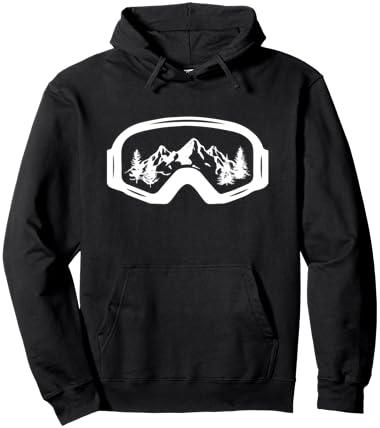Once upon a snowy mountain, two friends, Mia and Jake, prepared for a day of skiing. Mia donned her sleek ski jacket, while Jake shrugged on his everyday jacket. As they hit the slopes, Mia felt the warmth of her jacket, designed to repel wind and moisture, while Jake shivered as snowflakes danced on his shoulders. When they took a break, Mia’s jacket kept her cozy, with pockets for goggles and a snug hood. Jake, on the other hand, realized that not all jackets are created equal. The mountain taught him that some adventures require special gear.
Table of Contents
- Understanding the Essential Features of Ski Jackets
- Comparing Insulation and Breathability in Ski and Normal Jackets
- Evaluating Weather Resistance and Durability for Outdoor Activities
- Choosing the Right Jacket for Your Winter Adventures
- Q&A

Understanding the Essential Features of Ski Jackets
When it comes to choosing the right outerwear for winter sports, ski jackets are specifically designed to meet the unique demands of the slopes. Unlike regular jackets, ski jackets prioritize **waterproofing** and **breathability**, ensuring that you stay dry and comfortable even in the harshest weather conditions. The materials used in ski jackets often feature advanced technologies, such as Gore-Tex or similar membranes, which repel water while allowing moisture from sweat to escape. This balance is crucial for maintaining body temperature during high-energy activities like skiing or snowboarding.
In addition to weather resistance, ski jackets are equipped with a variety of **functional features** tailored for performance and convenience. These may include adjustable hoods, snow skirts, and multiple pockets designed to securely hold essentials like ski passes and goggles. Many ski jackets also incorporate **insulation** to provide warmth without bulk, allowing for ease of movement on the slopes. Furthermore, the fit of a ski jacket is often more tailored than that of a regular jacket, ensuring that it accommodates layering without compromising mobility, making it an essential piece of gear for any winter sports enthusiast.

Comparing Insulation and Breathability in Ski and Normal Jackets
When it comes to choosing the right outerwear for winter activities, understanding the differences in insulation and breathability between ski jackets and regular jackets is crucial. Ski jackets are typically designed with **high-performance insulation** materials that provide warmth without adding excessive bulk. This insulation is often made from synthetic fibers or down, which trap heat effectively while allowing for freedom of movement. In contrast, normal jackets may use less specialized insulation, which can lead to a bulkier feel and less efficient heat retention in extreme cold conditions.
Breathability is another key factor that sets ski jackets apart from their everyday counterparts. Ski jackets are engineered with **advanced moisture-wicking technologies** and ventilation systems, such as underarm zippers or mesh-lined pockets, to help regulate body temperature during intense physical activity. This ensures that sweat is quickly evaporated, keeping the wearer dry and comfortable on the slopes. Normal jackets, while they may offer some level of breathability, often lack these specialized features, making them less suitable for high-energy winter sports where temperature regulation is essential.

Evaluating Weather Resistance and Durability for Outdoor Activities
When it comes to outdoor activities, particularly in winter sports, the ability of a jacket to withstand harsh weather conditions is paramount. Ski jackets are specifically designed with advanced materials that offer superior **waterproofing** and **breathability**. These jackets often feature a higher waterproof rating, which means they can repel snow and rain more effectively than standard jackets. Additionally, ski jackets are equipped with **sealed seams** and **water-resistant zippers**, ensuring that moisture doesn’t seep in during intense activities. This level of protection is crucial for maintaining warmth and comfort on the slopes.
Durability is another critical factor that sets ski jackets apart from regular jackets. Ski jackets are constructed with **reinforced fabrics** that can endure the rigors of skiing, including abrasion from equipment and rough terrain. Many ski jackets also incorporate **insulation technologies** that not only provide warmth but also retain their shape and effectiveness over time. Features such as **adjustable cuffs**, **snow skirts**, and **helmet-compatible hoods** enhance functionality, making them more suitable for the dynamic movements involved in skiing. In contrast, a normal jacket may lack these specialized features, making it less reliable for extreme outdoor conditions.

Choosing the Right Jacket for Your Winter Adventures
When it comes to winter adventures, the choice of jacket can significantly impact your experience. A ski jacket is specifically designed to withstand the rigors of the slopes, featuring materials that are both waterproof and breathable. This ensures that you stay dry from both external snow and internal moisture from perspiration. Additionally, ski jackets often come equipped with features tailored for performance, such as:
- Insulation: Enhanced warmth without bulk, allowing for freedom of movement.
- Snow skirts: Preventing snow from entering the jacket during falls.
- Goggle pockets: Convenient storage for your ski gear.
In contrast, a normal winter jacket may prioritize style and everyday comfort over technical performance. While it can provide warmth and protection against cold weather, it may lack the specialized features that enhance functionality in extreme conditions. Normal jackets often focus on aesthetics and versatility, making them suitable for casual outings rather than high-energy activities. Key characteristics of a typical winter jacket include:
- Fashion-forward designs: Available in various styles to match your wardrobe.
- Lightweight materials: Comfortable for daily wear but may not offer the same level of insulation.
- Basic pockets: Functional but not specifically designed for outdoor gear.
Q&A
-
What materials are used in ski jackets compared to normal jackets?
Ski jackets are typically made from specialized materials that offer waterproofing and breathability, such as Gore-Tex or similar fabrics. Normal jackets may use cotton or polyester, which do not provide the same level of protection against moisture and wind.
-
How do insulation levels differ between ski jackets and normal jackets?
Ski jackets often feature advanced insulation technologies, like down or synthetic insulation, designed to keep you warm in extreme cold. Normal jackets may have lighter insulation, suitable for milder weather conditions.
-
Are there specific features in ski jackets that are absent in normal jackets?
Yes, ski jackets usually include features like snow skirts, adjustable hoods, and multiple pockets for ski passes and goggles. Normal jackets typically lack these specialized features, focusing instead on general style and comfort.
-
Can ski jackets be used for everyday wear?
While ski jackets can be worn casually, they may be bulkier and less stylish than normal jackets. However, many brands now offer ski jackets with a more fashionable design, making them versatile for both skiing and everyday activities.
while both ski jackets and normal jackets serve their purpose in keeping you warm, the former is specifically designed for the rigors of winter sports. Choose wisely, and let your adventures unfold in comfort and style!

大家好,我是彼得潘,專業的手法身體治療師。我喜歡探索和研究各種主題,並透過與人工智慧的合作分享專業、實用、有趣的文章。我們定期進行人工審核,以確保內容的準確性。如果您發現文章中有任何不準確的地方,請隨時與我們聯繫,我們會及時糾正。您可以透過 [email protected] 與我們聯繫。



